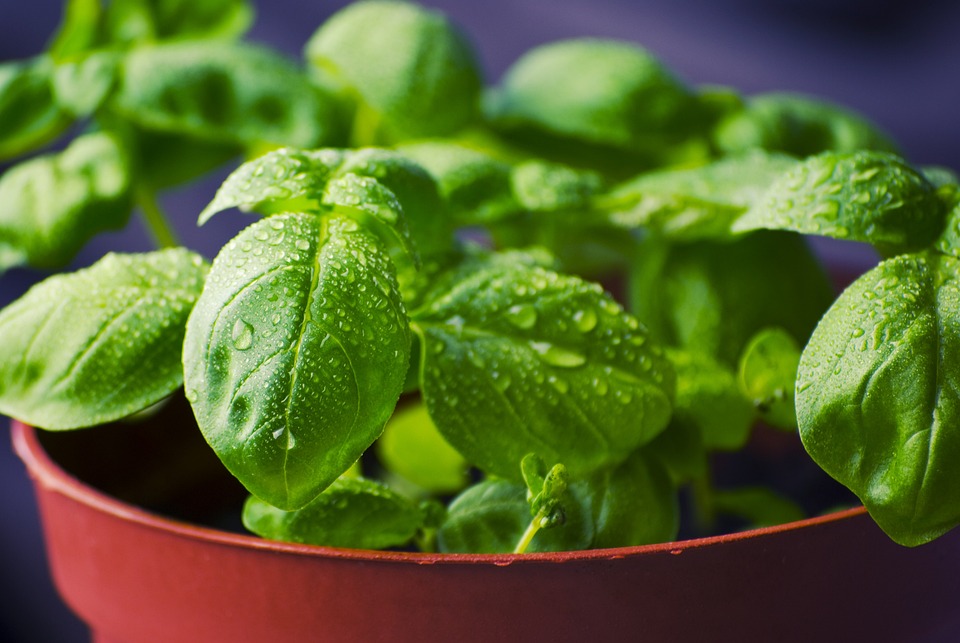the gastric sleeve Soft Food Diet: A Guide to Post-Surgery Recovery
After undergoing gastric sleeve surgery, it is essential to follow a specific diet plan to aid in your recovery and ensure long-term success. The transition from a liquid diet to solid foods can be challenging, but with the right approach, you can make it a smooth and enjoyable experience. In this article, we will guide you through the gastric sleeve soft food diet, providing you with all the information you need to know to navigate this phase of your weight loss journey.
1. Understanding the Gastric Sleeve Surgery
Gastric sleeve surgery, also known as sleeve gastrectomy, is a surgical procedure that involves reducing the size of your stomach to limit the amount of food you can consume. By removing a large portion of your stomach, the surgery helps you feel fuller with smaller portions, leading to weight loss. This procedure is often recommended for individuals with a body mass index (BMI) of 40 or higher or those with obesity-related health conditions.
2. The Purpose of the Gastric Sleeve Soft Food Diet
The gastric sleeve soft food diet is a crucial step in your post-surgery recovery. It allows your stomach to heal properly while gradually introducing solid foods back into your diet. During this phase, your stomach is still adjusting to its new size, and consuming soft foods ensures that you do not strain the surgical site or experience discomfort. This diet also helps you maintain weight loss and adapt to a healthier eating pattern.
3. Foods to Include in the Gastric Sleeve Soft Food Diet
During the soft food diet phase, you should focus on consuming foods that are easy to digest and gentle on your stomach. Here are some examples of foods to include in your diet:
a. Protein Sources
Protein is an essential nutrient for your body’s recovery and overall health. Include soft protein sources such as lean meats (chicken, turkey, fish), tofu, eggs, cottage cheese, and Greek yogurt in your meals. These foods provide the necessary amino acids for tissue repair and muscle growth.
b. Cooked Vegetables
Soft cooked vegetables are an excellent way to incorporate essential vitamins and minerals into your diet. Steam or boil vegetables like carrots, broccoli, cauliflower, and green beans until they are soft enough to chew easily. Avoid raw or fibrous vegetables during this phase, as they can be hard to digest.
c. Soft Fruits
Fruits are a great source of natural sugars, fiber, and antioxidants. Opt for soft fruits like bananas, melons, avocados, and cooked apples. Avoid fruits with tough skins or seeds as they can be difficult to digest.
d. Grains and Legumes
Incorporate soft grains and legumes such as oatmeal, quinoa, lentils, and soft bread into your diet. These foods provide fiber, carbohydrates, and essential nutrients, helping you stay full and satisfied.
e. Healthy Fats
While fat intake should be limited, incorporating healthy fats in small amounts is beneficial for your overall health. Include soft sources of healthy fats like avocado, nut butters, and olive oil in your meals.
4. Tips for a Successful Gastric Sleeve Soft Food Diet
Transitioning to a soft food diet can be challenging, but with these tips, you can make the process smoother:
a. Chew Thoroughly
Take your time to chew each bite thoroughly before swallowing. Chewing well aids in digestion and prevents discomfort.
b. Portion Control
Even though you can consume more substantial portions during this phase, it is crucial to practice portion control. Use smaller plates and listen to your body’s hunger and fullness cues.
c. Stay Hydrated
Drink plenty of water throughout the day to prevent dehydration. Sip water between meals rather than with your meals to avoid filling up your stomach too quickly.
d. Avoid Trigger Foods
Identify and avoid foods that may cause discomfort or trigger old eating habits. This may include high-sugar or high-fat foods that are not beneficial for your recovery and weight loss goals.
e. Seek Professional Guidance
Consult with a registered dietitian or nutritionist who specializes in Bariatric surgery to create a personalized soft food diet plan tailored to your specific needs and preferences.
5. Gradually Transitioning to Solid Foods
As your body adjusts and heals, you will gradually transition from a soft food diet to solid foods. This transition typically occurs four to six weeks after surgery, depending on your surgeon’s recommendations. It is crucial to follow your healthcare provider’s guidance during this phase to ensure a successful recovery and long-term weight loss.
In conclusion, the gastric sleeve soft food diet is a vital part of your post-surgery recovery. By following this diet plan and making healthy food choices, you can support your body’s healing process, adapt to a new eating pattern, and achieve long-term weight loss success. Remember to listen to your body, seek professional guidance, and stay committed to a healthier lifestyle.
Frequently Raised Concerns Concerning Gastric Sleeve Soft Food Diet
What is a Gastric Sleeve Soft Food Diet?
A Gastric Sleeve Soft Food Diet is a post-operative diet plan designed for individuals who have undergone gastric sleeve surgery. This diet typically starts about two weeks after the surgery and gradually introduces soft, easy-to-digest foods to help the patient transition from a liquid diet to a regular solid food diet.
The three most important information about a Gastric Sleeve Soft Food Diet are:
1. It is a diet plan specifically designed for individuals who have undergone gastric sleeve surgery.
2. The diet starts about two weeks after the surgery and gradually introduces soft, easy-to-digest foods.
3. It helps patients transition from a liquid diet to a regular solid food diet.
What are the benefits of following a Gastric Sleeve Soft Food Diet?
Following a Gastric Sleeve Soft Food Diet offers several benefits for individuals who have undergone gastric sleeve surgery. This diet helps in the healing process, prevents complications, and aids in weight loss.
The three most important benefits of following a Gastric Sleeve Soft Food Diet are:
1. It promotes proper healing after the surgery.
2. It reduces the risk of complications, such as food blockages or pouch stretching.
3. It supports gradual and healthy weight loss.
What foods can be included in a Gastric Sleeve Soft Food Diet?
A Gastric Sleeve Soft Food Diet includes a variety of soft, easily digestible foods that provide necessary nutrients while being gentle on the healing stomach. Some suitable options include mashed fruits and vegetables, cooked grains, lean proteins, and dairy products.
The three most important food categories that can be included in a Gastric Sleeve Soft Food Diet are:
1. Mashed fruits and vegetables, such as applesauce or mashed sweet potatoes.
2. Cooked grains like oatmeal or quinoa.
3. Lean proteins, including soft cooked chicken or tofu, and dairy products like yogurt or cottage cheese.
What foods should be avoided during a Gastric Sleeve Soft Food Diet?
While following a Gastric Sleeve Soft Food Diet, there are certain foods that should be avoided as they can be difficult to digest or may cause discomfort. These include tough meats, fibrous vegetables, carbonated drinks, and high-fat or sugary foods.
The three most important foods that should be avoided during a Gastric Sleeve Soft Food Diet are:
1. Tough meats, such as steak or jerky.
2. Fibrous vegetables like raw broccoli or celery.
3. Carbonated drinks and high-fat or sugary foods.
How long should a Gastric Sleeve Soft Food Diet be followed?
The duration of a Gastric Sleeve Soft Food Diet may vary depending on individual circumstances and the advice of a healthcare professional. Generally, this diet is followed for about four to six weeks after gastric sleeve surgery, but it is important to consult with a healthcare team to determine the appropriate duration.
The three most important information about the duration of a Gastric Sleeve Soft Food Diet are:
1. The diet is typically followed for about four to six weeks after gastric sleeve surgery.
2. The duration may vary based on individual circumstances and healthcare professional recommendations.
3. It is important to consult with a healthcare team to determine the appropriate duration for the diet.
Introduction
The Gastric Sleeve Soft Food Diet is a crucial part of the postoperative care plan for individuals who have undergone gastric sleeve surgery. This diet allows the stomach to heal and adjust to its reduced size, while also promoting weight loss. However, there are several misconceptions surrounding this diet that can cause confusion and misinformation. In this article, we will address and debunk some of the most common misconceptions about the Gastric Sleeve Soft Food Diet.
Misconception 1: The Gastric Sleeve Soft Food Diet is a temporary phase
One common misconception about the Gastric Sleeve Soft Food Diet is that it is only a temporary phase during the recovery period immediately following surgery. However, this is not entirely accurate. While the diet does progress in stages, starting with clear liquids and gradually introducing soft foods, the soft food phase is an important and long-term part of the postoperative diet. It typically lasts for several weeks to months, allowing the stomach to heal and adapt to the new eating habits.
Misconception 2: Soft foods can be consumed without any restrictions
Another common misconception is that soft foods can be consumed without any restrictions or portion control. This is not true. While soft foods are easier to digest and gentle on the stomach, it is crucial to maintain portion control and follow the recommended guidelines provided by the healthcare team. Overeating or consuming high-calorie soft foods can hinder weight loss and potentially stretch the stomach, defeating the purpose of the surgery.
Misconception 3: The diet lacks nutritional value
Some people believe that the Gastric Sleeve Soft Food Diet lacks nutritional value and does not provide the necessary nutrients for the body. However, this is a misconception. The diet is carefully designed to include a variety of nutrient-dense soft foods, such as lean proteins, vegetables, fruits, and whole grains. These foods provide essential vitamins, minerals, and proteins required for optimal health. Additionally, supplements and multivitamins are often recommended to ensure adequate nutrition during this phase.
Misconception 4: The diet is restrictive and boring
A common misconception about the Gastric Sleeve Soft Food Diet is that it is highly restrictive and boring, limiting the variety of foods that can be consumed. While there are certain restrictions on the texture and consistency of foods, there is still room for creativity and enjoyment in meal planning. Soft foods can be prepared in various delicious ways, using herbs, spices, and healthy cooking techniques. It is important to explore new recipes and experiment with different flavors to make the diet more enjoyable and sustainable.
Misconception 5: The diet does not require follow-up with healthcare professionals
Some individuals mistakenly believe that once they have undergone gastric sleeve surgery and are on the soft food diet, they no longer require follow-up with healthcare professionals. However, this is not the case. Regular follow-up appointments with the healthcare team are essential to monitor progress, address any concerns or complications, and provide guidance on diet, exercise, and overall well-being. These appointments help ensure that the individual is on track with their weight loss goals and are maintaining a healthy lifestyle.
In conclusion, the Gastric Sleeve Soft Food Diet is a vital part of the postoperative care plan for individuals who have undergone gastric sleeve surgery. It is important to debunk common misconceptions surrounding this diet to provide accurate information and support to those following the diet. Understanding the long-term nature of the diet, the importance of portion control, the nutritional value of soft foods, the potential for culinary creativity, and the need for ongoing healthcare professional follow-up can help individuals achieve successful weight loss and maintain a healthy lifestyle.
Gastric Sleeve Soft Food Diet
#undergoing #gastric #sleeve #surgery #important #follow #specific #diet #aid #healing #process #promote #weight #loss #soft #food #diet #typically #weeks #surgery #transitioning #liquid #diet #sample #gastric #sleeve #soft #food #diet

